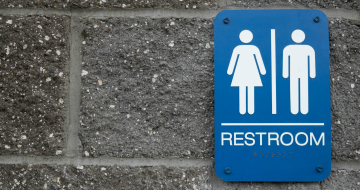

The Michael Garron Hospital is adding to its diversity and inclusion program by creating a gender diversity policy to support employees in the workplace and help them from a patient-care perspective.
The Toronto hospital began developing its diversity and inclusion program with employee training around lesbian, gay, bisexual, transgender and queer communities in 2014 and 2015. “My thought process was, if I implemented a gender diversity policy without educating or training or providing people with the knowledge, then it would get lost in the meaning and potentially be harmful for anybody that might need that support,” says Emily Ambos, the hospital’s staff learning specialist.
Read: Which Canadian employers are best for diversity?
Initially, Ambos looked at what the hospital offered from both an organizational and educational standpoint on diversity and inclusion. “I came back and said, ‘I’ve come up empty-handed. I don’t really have anything here to hang our hat on that says we promote, foster or train on any element of diversity,” she says. “And so I asked if there was an opportunity to create something. The execs said, ‘Why don’t we do a positive space campaign?’ which seemed simple and meaningful.”
A positive space campaign is essentially a signal within an organization that demonstrates an ally or a safe space, says Ambos, noting that in this case, that might be a rainbow flag in a storefront window indicating an inclusive environment. “I’d actually done a lot of research on how those positive space campaigns, if implemented, can be harmful if the proper foundation isn’t set,” she adds. “So it’s trendy to say, ‘I’m going to put a rainbow on my storefront or my door of my office’ and not be able to actually access the appropriate language and support.”
Ambos reached out to the 519, a Toronto-based non-profit organization, for some advice about the positive space campaign. The 519 suggested the hospital first go through an organizational needs assessment. Through the assessment, Ambos reconfirmed what she’d initially discovered — there there wasn’t much in place that would provide strong support.
Read: Employers must do more to build diverse, inclusive workforces: report
The next step was to look at training as the first step in the diversity and inclusion program. The hospital worked with the 519 to develop its training program, which is a four-hour session each month. After all of the hospital’s executives went through the training at the end of 2014 and early 2015, it rolled it out for all employees in the middle of that year.
“It’s open to all employees and it’s mandatory,” says Ambos. “It’s primarily targeting frontline staff. So we did all of our executive team and all our management team. The training is twofold as well. It looks at employees and it looks at patients and supporting both populations.”
The focus of the training was on language and terminology and how they can be inclusive or polarizing, notes Ambos. It also looks at the hospital’s responsibilities under the Ontario Human Rights Code. “We have lots of activities around how to apply it into the workplace, again from an employee standpoint and from a patient-care perspective,” she says.
Read: One-third of Canadians don’t see their work as LGBTQ inclusive: study
Employees have access to sign up for the training through an online module. And then Ambos gently nudges them with emails each month to remind them of the date for each monthly session and encourage them to enrol.
Ambos is now in the process of drafting a gender identity policy. “It will read more as a manual in terms of supporting employees who may choose to be out in the workplace, particularly going through a transition, but it will also have a reference to the clinical world and how we can best support a patient who may be in the process of transitioning or what is the best practice to ensure we’re looking at their rights under the Ontario Human Rights Code, in terms of bed allocation, access to hormones, preferred name, those types of challenges and obstacles that come up for those members of the community,” she says.
So far, employees have welcomed the program, according to Ambos, who acknowledges it’s difficult to track engagement. “It’s one of those issues that perhaps people aren’t open about if they’ve experienced harassment or discrimination based on those grounds — sexual orientation, gender identity or expression,” she says.
“But we’ve been happy to report, in terms of overall acceptance of the program, we’ve had a lot of really great, great feedback. A lot of people have said it’s been really helpful not just in their clinical practice but also in their personal life, managing neighbours, friends, families and those relationships as they learn to understand that, even in their own backyards, people are diverse.”
The hospital includes a custom question on its annual employee engagement survey that asks about diversity and inclusion and whether the organization is doing a good job, says Ambos. “And, I’m happy to say, those results are trending upwards.”
The Michael Garron Hospital was the winner of the mental-health award at Benefits Canada’s 2016 Workplace Benefits Awards. The 2017 awards will take place in Toronto on Thursday, Oct. 12. Buy your tickets here for a front-row seat to find out which organizations will win awards in seven categories this year.
Read: Michael Garron Hospital wins mental-health award for holistic approach
